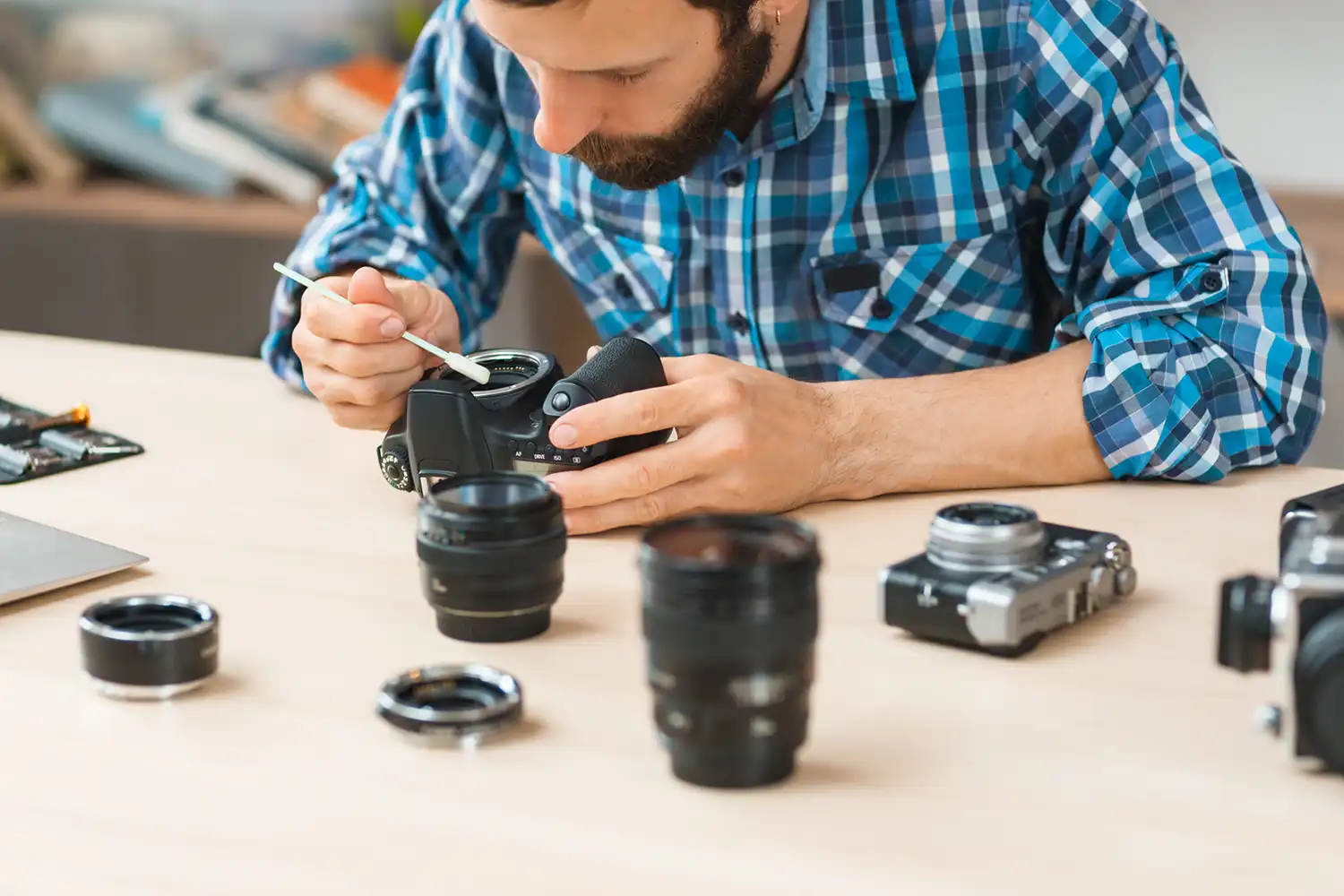As a photographer, capturing stunning images is my passion. But dust and debris on the camera sensor can quickly turn a sharp photo into a blurry mess. That’s why knowing how to clean a camera sensor safely and effectively is crucial. Don’t worry, it’s not as daunting as it may seem!

In this guide, I’ll walk you through the process step-by-step, from gathering the right tools to ensuring your sensor stays pristine. Clean your sensor regularly, especially if you frequently change lenses or shoot in dusty environments.
Avoid touching the sensor with your bare fingers. If you encounter stubborn dirt or debris, consult a professional cleaning service. Consider practising on an older camera sensor before cleaning your primary camera’s sensor.
By following these steps and exercising caution, you can effectively clean your camera sensor and ensure your photos remain sharp and pristine. Now, go out there and capture amazing images!
Before diving in, it’s crucial to acknowledge that cleaning your sensor comes with a slight inherent risk. A misplaced touch or improper tool can harm the delicate sensor, leading to expensive repair costs.
Therefore, exercise caution and work in a clean, well-lit environment. If you’re unsure about any step, it’s always recommended to consult a professional camera technician.
Now, let’s explore the essential tools you’ll need.
Rocket blower: This bulb pump utilises pressurised air to gently dislodge loose dust particles from the sensor. Look for one with a directional nozzle for precise airflow control.
Sensor cleaning swabs: These swabs are specifically designed for cleaning delicate electronics like camera sensors. They are lint-free and made from a non-abrasive material, often microfiber or specialised cleaning fabric.
Sensor cleaning solution: This is a pre-moistened cleaning solution specifically formulated for camera sensors. It dissolves stubborn dust and debris without damaging the sensor coating.

1. Power off your camera: This prevents accidental shutter release while cleaning.
2. Remove the lens: It’s easier to access the sensor with the lens detached. Be mindful of dust settling on the exposed mount while the lens is off.
3. Blow away loose dust: Use the rocket blower, gently squeezing the bulb to release short bursts of air and dislodge any loose particles. Hold the blower at an angle to avoid directing the air directly onto the sensor.
4. Inspect the sensor: Use a bright light source and a magnifying glass (if needed) to check for remaining dust or debris.
5. Moisten a cleaning swab: Apply a tiny amount of sensor cleaning solution to the sensor cleaning swab. A single drop is enough.
6. Clean the sensor: Gently swipe the swab across the sensor in one smooth motion, starting from one side and moving to the other. Repeat with a clean swab if necessary. Do not apply pressure or rub back and forth.
7. Clean the surrounding area: Use the dry microfiber cloth to wipe clean the mirror box and surrounding areas where dust might have settled during the cleaning process.
8. Reattach the lens: Mount the lens back onto the camera body, ensuring it’s securely fastened.
9. Test and confirm: Take a few test shots to ensure the dust is gone and your images are clear.

While gathering your cleaning supplies, it’s equally important to know what to avoid.
While some photographers use compressed air, it’s generally discouraged due to the risk of propelling dust deeper into the camera or even forcing it onto the sensor.
If you choose to use it, opt for a compressed air can specifically designed for cleaning cameras and use it with extreme caution, holding the can upright and at a safe distance.
Cotton swabs or tissues are not intended for cleaning delicate surfaces like camera sensors. Their fibres can easily shed, leaving lint or scratches on your sensor.
Never use harsh chemicals or cleaning solutions like alcohol, window cleaner, or even distilled water on your sensor. These can damage the sensor’s coating and render it unusable.
Brick-and-mortar camera stores often carry a range of sensor cleaning kits from different brands. They can also offer guidance on choosing the right kit for your camera.
Numerous online retailers like Amazon, B&H Photo, or Adorama offer a wide selection of sensor cleaning kits at competitive prices. Be sure to read reviews and compare product specifications before purchasing.
Some camera manufacturers also sell sensor cleaning kits specifically designed for their camera models.
The frequency of sensor cleaning depends on several factors such as the shooting environment. If you frequently shoot in dusty or windy environments, like beaches, deserts, or during construction projects, your sensor will need cleaning more often.
Changing lenses exposes the sensor to dust, so if you frequently change lenses, you might need to clean the sensor more frequently. If you notice dust spots appearing in your photos, it’s time to clean the sensor.
As a general rule, it’s recommended to clean your sensor every few months or whenever you notice visible dust spots in your images. However, it’s important to avoid cleaning it too often, as excessive cleaning can also damage the sensor.
(iPhotography may make small commissions from links in this article.)
Discover TOP features in the Lightroom CC mobile app with this guide for enhancing your photo editing skills. For desktop and tablet too.
Shooting sunsets using amazing 5-in-1 magnetic lens filters from Kentfaith, the 1st choice for photo & video products.
Popular memory cards for photography – what’s the best SD card for your digital camera? Choose the right capacity and class speed in our guide
Learn the basics of photography – fast – with our FREE 60-Second Photographer online course. Each class is short and sharp with simple, actionable steps that give you immediate results.
x 30 lessons

© iPhotography™
Become a confident and competent photographer in less than 30 minutes!
Before you leave, make sure you’ve secured your FREE online photography course (worth £29.99)
Each class is just 60-seconds or less making it the fastest and easiest way to learn photography!